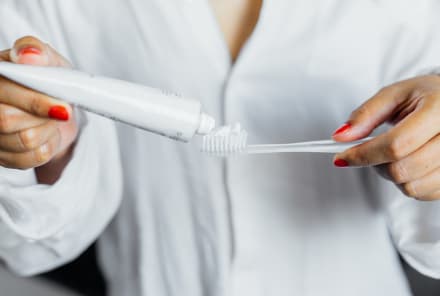Advertisement
How To Tell If You're Vitamin D Deficient + What To Do About It


Being deficient in a vitamin may seem like NBD, but it can produce a slurry of unpleasant side effects—some of which may be affecting you on a daily basis.
Vitamin D is one of those key vitamins that can cause a feeling that something is “off.” It’s easy to overlook signs of low vitamin D levels or blame them on something else, but considering 29% percent of U.S. adults are deficient1 in vitamin D and a whopping 42% are insufficient, it’s highly possible suboptimal vitamin D status is the root of your seemingly unrelated symptoms.
The biggest sign you're deficient in vitamin D
While vitamin D deficiency can cause a variety of symptoms, the biggest sign that you are deficient in this vitamin is tiredness and the general feeling of being unwell. “Low vitamin D levels contribute to fatigue,” functional practitioner B.J. Hardick, D.C. previously wrote in a mindbodygreen article. “But getting sufficient amounts can correct this problem.”
Research has identified a link between fatigue and low vitamin D levels. In a 2019 study published in EPMA Journal, 90% of multiple sclerosis patients2 were also found to be vitamin D deficient. After improving their vitamin D status, their quality of life improved and their fatigue subsided.
Achiness and a general feeling of being unwell are often connected to fatigue. These symptoms, along with other signs of low vitamin D (e.g., low mood or getting sick often) can add up—especially in winter when everything already feels kind of depressing and “blah.”
Maybe you stayed up late this week catching up on White Lotus and you’re blaming your sleepiness on that. Or, you’ve recently started traveling again, and you’re blaming your feeling of being unwell and general struggle to get back into your work schedule on jetlag.
While these symptoms can easily be attributed to other factors (illness, chronic stress, poor sleep health, etc.), experiencing them together almost 24/7 indicates it might be time to get your vitamin D levels checked.
Other signs you need more vitamin D
Because vitamin D is involved in myriad systems and physiological functions, not getting enough can result in a variety of effects.
Here are some symptoms associated with low vitamin D levels:
What to do if you're concerned about your vitamin D levels
If you’ve been saying to yourself, “yes, someone finally gets me,” as you read signs of VDD, it might be time to head to your health care provider and get your vitamin D levels checked with a 25(OH)D serum test (for sake of convenience, you can also try an at-home test).
When you get your results back, you’ll also need to know how to interpret them. Understanding your vitamin D levels can help you know what steps to take to achieve truly optimal vitamin D levels.
While some view 30 ng/ml as the goal, many experts—including board-certified endocrinologist Brittany Henderson, M.D. and nutrition scientist Ashley Jordan Ferira, Ph.D., RDN—recommend striving for vitamin D levels above 50 ng/ml.
"We are consistently undertreating patients when we stop at 30 ng/ml,” Henderson previously told mindbodygreen. "Our population is heavily vitamin D deficient and targeting an optimal level of 50 ng/ml has an enormous impact on all aspects of human health."
Because there are a limited number of food sources that provide vitamin D and it’s insanely difficult to get enough from the sun itself (especially during the winter), taking a vitamin D supplement is the way to help you achieve and maintain healthy vitamin D levels (you can find mindbodygreen’s top vitamin D supplement picks here).
The takeaway
Even with the knowledge that vitamin D is wildly important for health and well-being (and writing about the topic frequently), I recently discovered my own vitamin D levels were insufficient.
I can personally attest to the symptoms of general tiredness and just not feeling good. The understanding of the importance of vitamin D is one thing, but getting tested regularly and addressing insufficiency is key to ensuring you achieve and sustain healthy levels.
So, here’s your nudge to action—get your D levels tested. If they’re under 50 ng/ml, it’s time to address your levels with supplementation. And on that note, I’m going to take my supplement (good thing I keep it on my desk!).
Watch Next
Enjoy some of our favorite clips from classes
Enjoy some of our favorite clips from classes
What Is Meditation?
Mindfulness/Spirituality | Light Watkins
Box Breathing
Mindfulness/Spirituality | Gwen Dittmar
What Breathwork Can Address
Mindfulness/Spirituality | Gwen Dittmar
The 8 Limbs of Yoga - What is Asana?
Yoga | Caley Alyssa
Two Standing Postures to Open Up Tight Hips
Yoga | Caley Alyssa
How Plants Can Optimize Athletic Performance
Nutrition | Rich Roll
What to Eat Before a Workout
Nutrition | Rich Roll
How Ayurveda Helps Us Navigate Modern Life
Nutrition | Sahara Rose
Messages About Love & Relationships
Love & Relationships | Esther Perel
Love Languages
Love & Relationships | Esther Perel


















